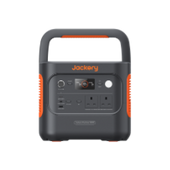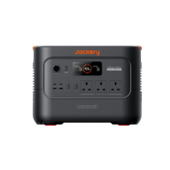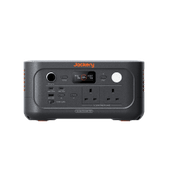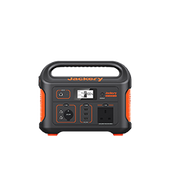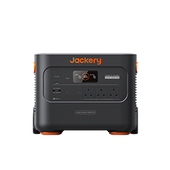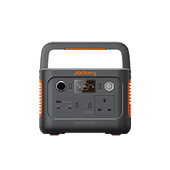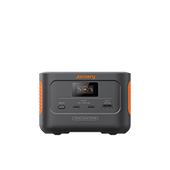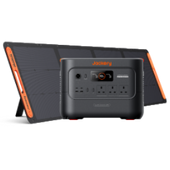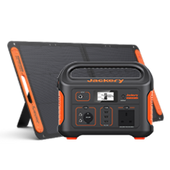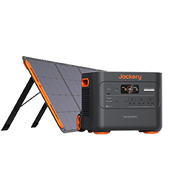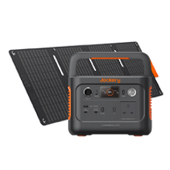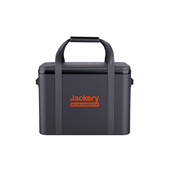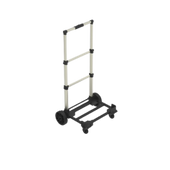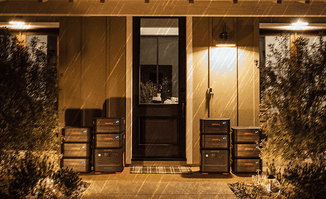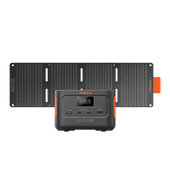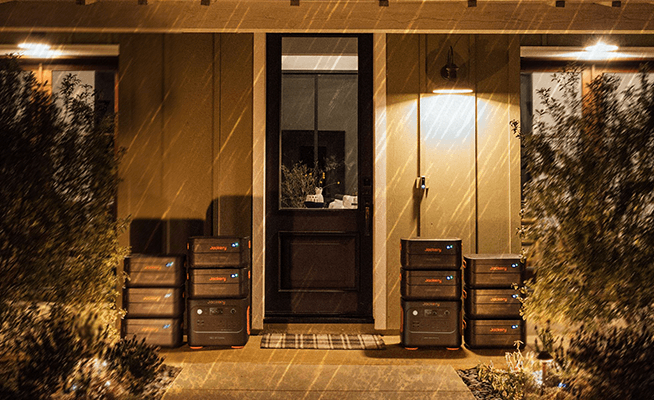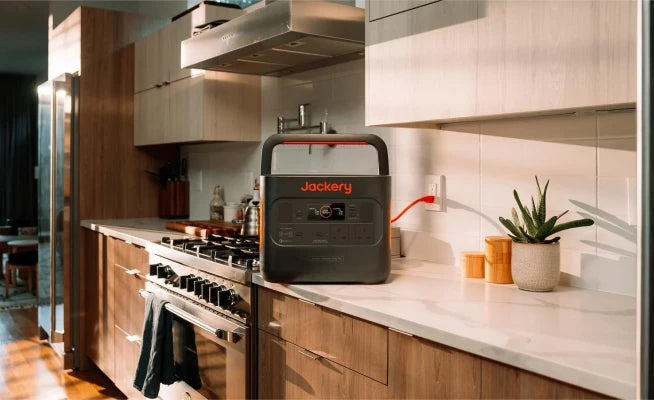Mitigating Environmental Risks: Battery Station Safety Best Practices in the UK
With an escalating interest in sustainability and green energy solutions, the UK is witnessing a surge in the adoption of home backup battery stations. These stations, primarily used to store renewable energy for homes, are rapidly becoming an indispensable part of the modern British household. Yet, as their popularity grows, so does the responsibility of ensuring their safe and eco-friendly usage. This article delves into best practices for battery station safety, highlighting key concerns specific to the UK context.

The Rise of Home Backup Battery Stations in the UK and the Imperative of Safety
Following our exploration of the growing trend of a home backup battery station in the UK, it's crucial to pivot our focus towards the safe use and maintenance of this system. Brands like Jackery have been at the forefront, offering products that are a blend of power and safety. Jackery’s advanced portable power stations can deliver reliable power under the unique challenges of unpredictable British weather. From selecting the ideal location for installation to understanding the nuances of daily operation, a meticulous approach is essential for maximising benefits while mitigating risks. In the upcoming sections, we will delve into the specifics of these best practices, designed with the British homeowner in mind, ensuring that the transition to green energy is sustainable and safe.
The Green Shift and The British Household
The United Kingdom's commitment to net-zero emissions by 2050 has acted as a significant catalyst for households to adopt renewable energy solutions. As solar panels dot the rooftops and wind turbines become a common sight across the UK landscape, the need for efficient energy storage solutions becomes apparent. Enter home backup battery stations and solar generators, devices that store excess energy for later use, reducing dependency on the national grid and providing a backup during power outages.
In cities from London to Edinburgh, and from Cardiff to Belfast, these battery storage systems and solar generators are not just about energy efficiency; they also symbolise a progressive step towards a greener future. For the local Briton, it's a statement of intent and a testament to their commitment to environmental conservation.
The Safety Imperative
Yet, as with any technological innovation, these battery systems come with their set of challenges. Their ability to store significant amounts of energy means they also have the potential to release that energy unexpectedly, posing risks to both the environment and the users.
The British climate, characterized by its dampness and frequent rainfall, adds another layer of complexity. The UK's unique weather patterns necessitate stringent safety protocols to prevent moisture-related damage, which could lead to short circuits or, in worse-case scenarios, fires.
For the everyday UK citizen, awareness of these risks and adherence to safety best practices isn't just about protecting their investment; it's about ensuring the well-being of their families, neighbours, and the larger community. It's also about preserving the beautiful British landscapes that these renewable energy initiatives aim to protect in the first place.
Environmental Risks Associated with Battery Stations
As the UK moves progressively towards a greener future, it's essential to understand the potential risks tied to home battery stations and battery power stations. Only through awareness can homeowners, manufacturers, and policymakers work together to mitigate these hazards and ensure the transition to renewable energy is seamless and safe. Below, we break down the main environmental risks associated with these battery systems, considering the unique context of the UK:
1. Thermal Runaway and Overheating
- Risk:Batteries can sometimes experience 'thermal runaway,' a chain reaction leading to a self-heating state. This is often due to defects, overcharging, or external heat sources.
- Potential Consequences:The UK's typical cooler climate might seem like a deterrent to overheating. However, enclosed spaces and occasional heatwaves can lead to battery overheating, reducing lifespan and efficiency. Prolonged overheating could damage surrounding structures or, in the worst cases, cause fires.
2. Electrical Hazards and Short Circuits
- Risk:A battery station consists of complex electrical components. If improperly managed or exposed to moisture, they can experience short circuits.
- Potential Consequences: The frequent rain and damp conditions in the UK increase the risk of moisture entering battery systems. Short circuits can lead to power outages, equipment damage, and pose serious electrocution risks to homeowners and technicians alike.
3. Gas and Toxic Smoke Emissions
- Risk:If a battery is damaged or malfunctions, it can emit hazardous gases and smoke that are toxic to both humans and the environment.
- Potential Consequences:These emissions can degrade indoor air quality, posing health risks to residents. Additionally, these emissions can contribute to localized air pollution in densely populated areas like London or Manchester.
4. Leaks/Spills
- Risk:Batteries contain chemicals and electrolytes, which can leak or spill due to damage or degradation over time.
- Potential Consequences:Leaks can contaminate the surrounding soil, harming local flora and fauna. For homeowners with gardens, this poses a direct threat to their plants and potentially the local groundwater.
5. Fires and Explosions
- Risk: While rare, battery malfunctions or defects can result in fires or explosions.
- Potential Consequences:Besides the immediate threat to life and property, fires can release harmful pollutants into the atmosphere. In the UK's compact neighbourhoods, a fire in one home can easily spread or endanger adjacent properties.
6. Improper Disposal
- Risk:Batteries have a finite life. Once depleted, improper disposal can lead to long-term environmental degradation.
- Potential Consequences: Batteries improperly disposed of in landfills can release hazardous chemicals into the soil and water. In the UK, where conservation areas and natural habitats are cherished, this poses a significant threat to local ecosystems.
Understanding the various risks associated with a home battery station is fundamental for UK homeowners seeking to contribute to a sustainable future. While these systems offer remarkable benefits in the realm of green energy, their potential hazards cannot be overlooked. By staying informed and proactive, Britons can ensure that their shift to renewable energy is as safe as it is revolutionary. The challenges, although significant, are surmountable with the right knowledge and practices. As we venture further into this green revolution, it remains our collective responsibility to harness its power responsibly and safely for the betterment of our environment and communities.

Best Practices for Home Battery Station Safety
Ensuring the safety of a home battery station, especially in the unique climatic and environmental context of the UK, demands a proactive approach. This section will delve into best practices that homeowners should adopt to mitigate potential hazards and ensure their green energy solutions are both effective and safe.
1. Proper Ventilation and Cooling
- Implementation:the battery station should be installed in well-ventilated areas. Utilise fans or cooling systems to maintain optimal temperatures, especially during summer.
- Rationale:This ensures that any heat generated is effectively dissipated, preventing overheating and potential thermal runaways.
2. Overcharge/Temperature Protection
- Implementation:Ensure your battery system is equipped with integrated overcharge and temperature monitoring mechanisms.
- Rationale:These systems automatically stop the charging process once the battery reaches its limit or if it detects a temperature anomaly, thus avoiding the risks of overheating and battery damage.
3. Secure Installation and Enclosures
- Implementation: Install a battery stationon elevated platforms or specially designed enclosures to protect against flooding, especially in areas prone to heavy rainfall.
- Rationale: This safeguards the system from potential water damage, electrical malfunctions, and reduces the risk of short circuits.
4. Use of Non-Flammable Materials
- Implementation: Ensure that surrounding infrastructure and the battery enclosures use non-flammable materials.
- Rationale: This reduces the chance of fire spreading if the battery were to malfunction, offering an added layer of protection to the home and its occupants.
5. Gas Backup Ventilation
- Implementation:If your battery system is indoors, incorporate a ventilation system that can swiftly expel any hazardous gases that might be emitted in the case of a malfunction.
- Rationale:Swift ventilation reduces the risk of toxic exposure to occupants and helps mitigate potential environmental harm.
6. Warning Sensors and Automatic Shutdown
- Implementation: Integrate sensors that can detect anomalies like overheating, gas emissions, or electrical issues. These should be connected to an automatic shutdown mechanism.
- Rationale:Early detection and automatic system shutdown can prevent minor issues from escalating into major hazards.
7. Emergency Ventilation Control
- Implementation: Have a manual emergency ventilation control, easily accessible, to expel any toxic gases or smoke.
- Rationale:In situations where automated systems might fail, manual controls provide homeowners with the means to manage and mitigate potential risks quickly.
8. Child Safety Locks
- Implementation:Equip a battery station with child safety locks to prevent unauthorised access, especially if they're within reach of children.
- Rationale:This ensures that curious children can't inadvertently tamper with or access the battery system, ensuring their safety.
9. Safety Maintenance Procedures
- Implementation:Schedule regular maintenance checks by professionals. Familiarise yourself with basic safety checks and procedures, ensuring systems are free from visible damage, leaks, or other anomalies.
- Rationale:Regular check-ups can detect and rectify potential issues before they escalate, maintaining the system's longevity and safety.
As the UK forges ahead in its green energy journey, adopting and implementing best practices for home battery station safety becomes paramount. These guidelines are not mere suggestions; they embody the ethos of responsible renewable energy usage. By prioritising safety, British homeowners can seamlessly integrate these powerful energy solutions into their daily lives, ensuring that the promise of a sustainable future is realised without compromising the well-being of our communities and the environment. In the quest for a cleaner, greener future, the mantra remains clear: innovate, but always keep safety at the forefront.
Spotlight on Jackery: Leading the Charge in Home Battery Safety
As the demand for a home battery station grows in the UK, consumers are looking for products that offer efficient energy storage and prioritize safety. Jackery, a renowned name in the industry, stands out with its commitment to delivering both. In this section, we'll delve into two flagship Jackery products that meet and exceed the safety standards for home backup batteries: the Jackery Explorer 2000 Pro Portable Power Station and the Jackery Explorer 2000 Plus Portable Power Station.
Jackery Explorer 2000 Pro Portable Power Station
In the realm of home battery solutions, Jackery stands out with its blend of innovation and reliability. Before delving deeper, let's take a moment to introduce one of their flagship models: the Jackery Explorer 2000 Pro Portable Power Station and its notable features:
Product Details and Features:
- Power Supply for Multiple Devices: This power station, acting as an efficient battery charging station, is designed to handle the simultaneous charging of various devices. From smartphones and laptops to drones and cameras, the Jackery Explorer 2000 Pro Portable Power Station ensures that all your tech essentials are powered up when you need them.
- Compatible with Various Household Appliances: Whether it's a mini-fridge, a portable fan, or even a television, this power station can support a wide range of household appliances. This feature is particularly handy during power outages, ensuring the comfort and convenience of your home remain uninterrupted.
- Built-in Dual Battery Protection Chips and Four Temperature Core Detectors: One of the standout safety features of the Jackery Explorer 2000 Pro Portable Power Station is its advanced protection mechanisms. The dual battery protection chips prevent overcharging and other potential electrical issues. Simultaneously, the four temperature core detectors continuously monitor the unit's temperature, ensuring it remains within safe limits and reducing the risk of overheating.
Usage Example:
Imagine a family in rural UK, where power cuts can be frequent, especially during winter storms. Jackery Explorer 2000 Pro Portable Power Station becomes their go-to backup with its ability to last approximately 3 days under normal power usage. During an outage, they can comfortably run essential appliances like heating units, charge phones, and even enjoy a movie night for multiple days, all while being assured of the unit's safety features in play. With the Jackery's long-lasting battery capacity, the family no longer has to worry about short outages disrupting their daily life.

Jackery Explorer 2000 Plus Portable Power Station
Building upon the legacy of its predecessors, the Jackery Explorer 2000 Plus Portable Power Station showcases further innovation and refinement in its offerings, setting it apart in the world of home backup battery systems. Here's a closer look at its defining features:
Product Details and Features:
- Power Supply for Devices up to 3000W:A significant upgrade from previous models, the Jackery Explorer 2000 Plus Portable Power Station is equipped to supply power to even more demanding devices and appliances, catering to a power range of up to 3000W. This makes it exceptionally suitable for high-energy-consuming household items, ensuring they run smoothly even in blackout scenarios.
- ChargeShield Technology: Prioritising safety, the Jackery Explorer 2000 Plus Portable Power Station incorporates Jackery's proprietary ChargeShield Technology. This state-of-the-art feature ensures efficient charging while actively preventing overcharging and other potential electrical mishaps. The ChargeShield not only extends the life of the battery but also guarantees a safer user experience.
- 5-Year Warranty:Demonstrating confidence in their product, Jackery offers an impressive 5-year warranty on the Jackery Explorer 2000 Plus Portable Power Station. This commitment speaks volumes about the product's durability and the company's dedication to customer satisfaction. UK consumers can invest in this power station with the assurance that they're backed by a brand that stands by its offerings.
Usage Example:
Visualize a small business owner in the heart of London, operating a quaint café. In an unexpected power outage, the Jackery Explorer 2000 Plus Portable Power Station comes to the rescue, able to sustain the café for 2 full days under normal usage. The power station effortlessly supports the café's espresso machine and blenders, ensuring that business continues as usual throughout the outage. The ChargeShield Technology ensures that the devices are powered safely, and with a 5-year warranty, the café owner rests easy, knowing they have a reliable backup for years to come.
With these advanced features, the Jackery Explorer 2000 Plus Portable Power Station cements its position as a front-runner in the home backup battery sector. UK homeowners and business proprietors alike will find in it a blend of power, safety, and reliability that is hard to match.

Conclusion: Powering Ahead with Prudence
The surge in home backup battery stations in the UK marks an exciting era in our sustainable energy journey. While innovations, like those from Jackery, offer promise and efficiency, it's essential to remember the core tenet: safety first. As we embrace these modern energy solutions, we must understand their risks and diligently implement safety practices. Investing in the right product is just the start; using it responsibly ensures everyone a brighter, safer future. Let’s harness this green revolution with care and caution.
Related Articles:
Advancing Sustainability: The Environmental Impact of LiFePO4 Solar Batteries
Evolution of UK Power Generation: From Traditional to Renewable Sources
Ensuring Uninterrupted Power: The Importance of Battery Backup in the UK


